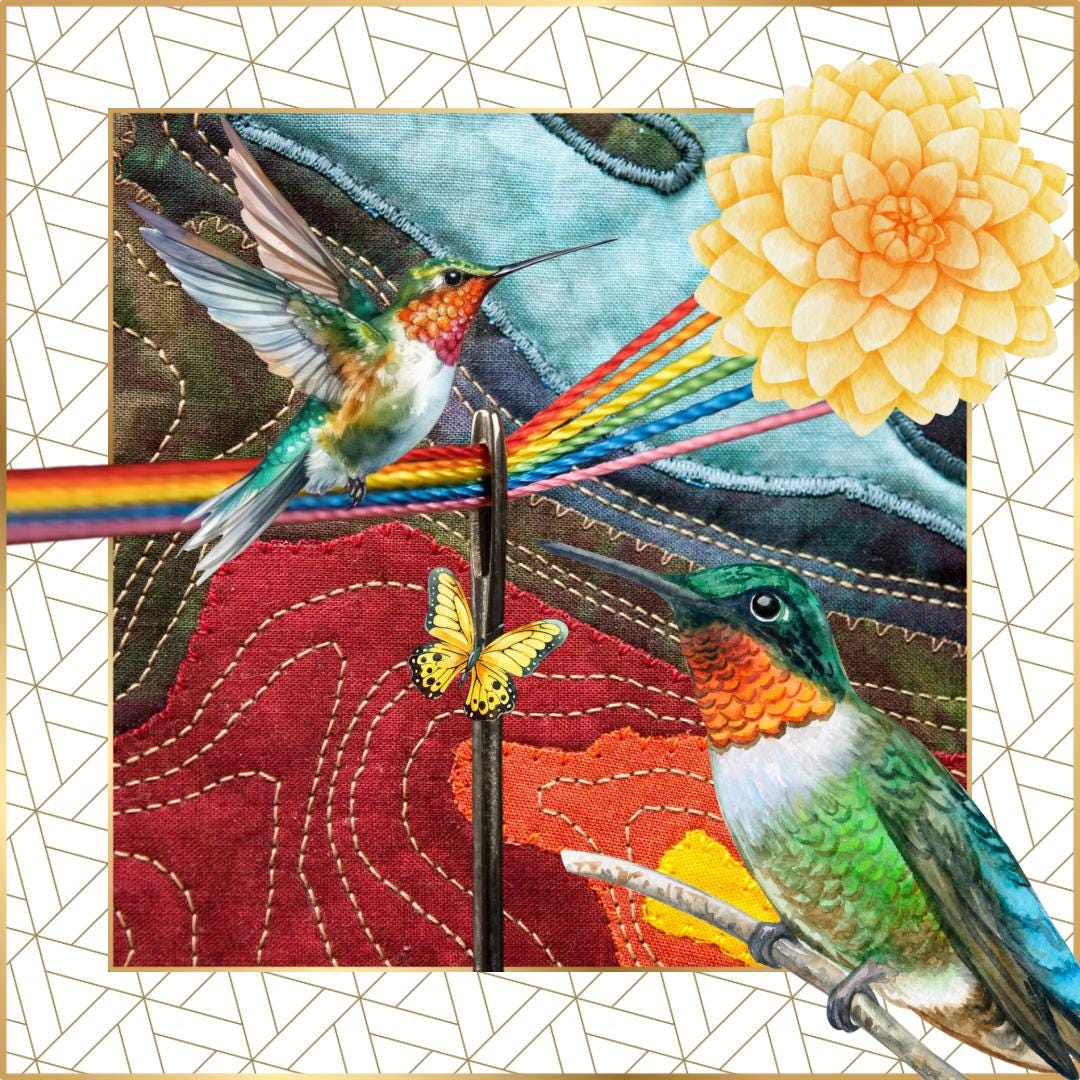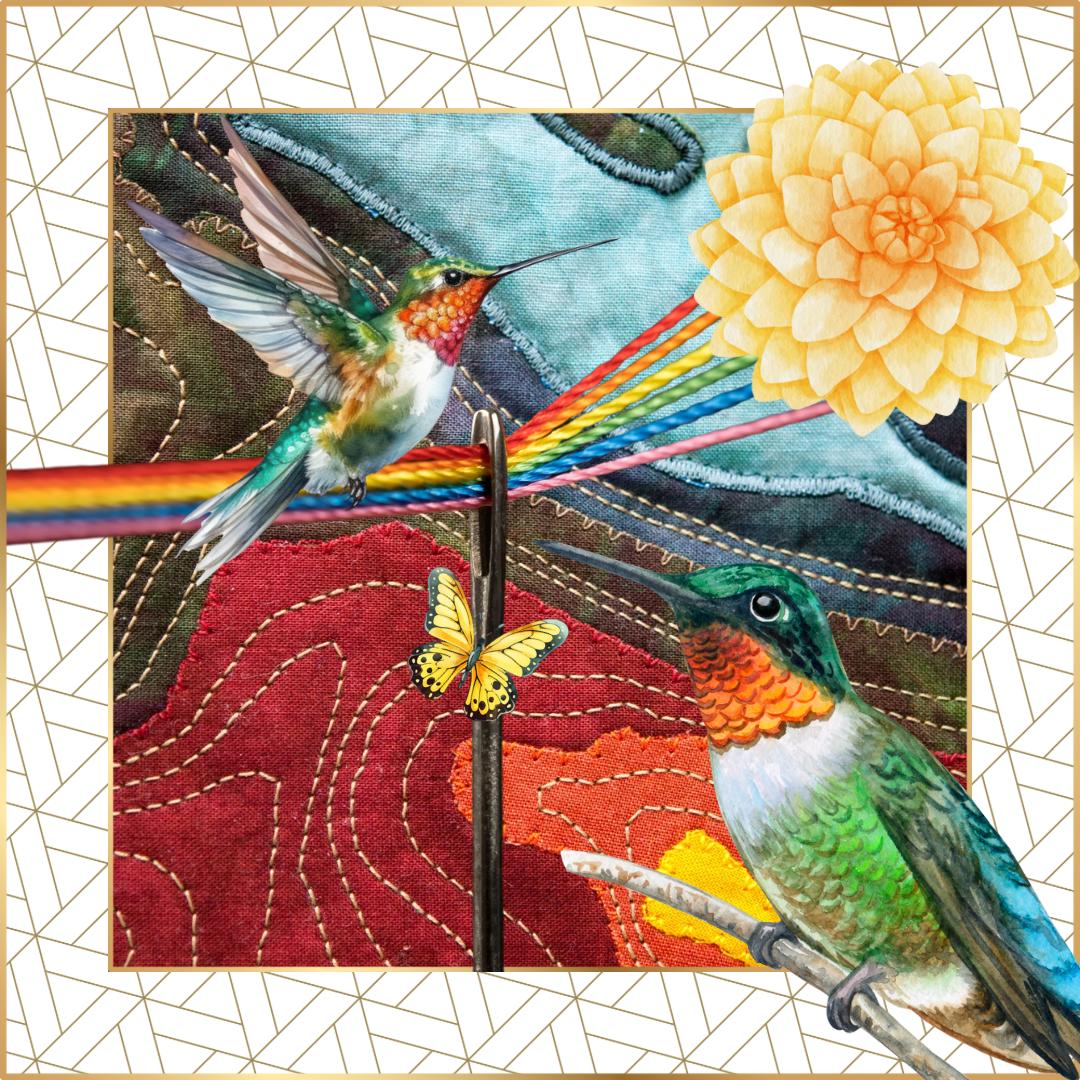
Stitched in Time: The Art, History, and Language of Quilting
Quilting is far more than fabric and thread. It is storytelling. It is math and art, history and innovation. It is both deeply personal and profoundly communal. Across generations and cultures, quilting has served as a language of identity, resilience, and connection—a silent dialogue stitched into cloth.
A Brief History of Quilting
Quilting as a practice spans continents and centuries, with early examples appearing in Ancient Egypt, medieval Europe, and feudal Japan. Yet it was in American history, especially during the 18th and 19th centuries, that quilting became a vital form of artistic expression and cultural preservation. Often dismissed as “women’s work,” quilts were—and still are—powerful records of domestic life, spiritual symbolism, and communal storytelling.
Quilting bees offered social gathering spaces for women, where sewing served not just practical needs but emotional ones, stitching together community as much as fabric. These gatherings were spaces of creativity, oral tradition, and kinship.
The Golden Ratio: Quilting’s Unspoken Law of Beauty
At the heart of many timeless quilt patterns lies an ancient mathematical principle: the golden ratio. Known as phi (approximately 1.618), this proportion is found in nature, architecture, and classical art. Quilters, knowingly or not, often employ this ratio to create balance, harmony, and visual appeal.
From the spirals in “log cabin” designs to the proportionality of sashing and borders, the golden ratio gives quilts their subliminal elegance. When used intentionally, it transforms a simple quilt into a work of sacred geometry—a nod to nature’s perfection in handmade form.
Quilts as Codes: Threads of Resistance
One of the most compelling chapters in quilting history is the use of quilts as communication tools on the Underground Railroad. Though the historical accuracy of some of these stories is debated, the oral tradition holds that specific quilt patterns—like the “Monkey Wrench,” “Bear’s Paw,” and “Drunkard’s Path”—were used as visual codes to guide enslaved people toward freedom.
These quilts hung on fences or aired on porches held secrets in plain sight. In a time when words were dangerous, quilts became symbols of hope and maps to liberation. Whether or not every story can be verified by historians, the metaphor remains powerful: textiles can carry messages, transmit power, and protect life.
Speaking in Art: The Quilt as a Language
As artists, we speak in color, form, and rhythm. Quilts are conversations—stitched statements of identity, memory, protest, or joy. Each fabric choice, stitch line, or patchwork block carries intention, emotion, and story.
In this way, quilting is a form of visual language. And like all true languages, it allows both individuality and universality. This leads us to a concept that captures the essence of artful community:
“The quilt metaphor, to its credit, suggests that many and varied pieces can successfully be assembled and stitched together to create a beautiful and functional whole without any of the pieces losing their distinct characteristics.”
This idea is central not just to quilting but to human existence. In a world that often tries to homogenize or separate us, art like quilting reminds us that beauty comes from difference—and that unity doesn’t require sameness.
Quilting as a Modern Practice of Healing and Empowerment
Today, quilting continues to thrive, both as a functional craft and a vibrant art form. Modern quilters use reclaimed fabrics, natural dyes, and even digital design tools. For many, quilting is a meditative practice—a way to ground the body, still the mind, and make something meaningful.
In therapeutic and coaching contexts, quilting offers metaphor-rich material for healing work. What do we want to keep? What patterns are we repeating? What pieces of our story are we stitching into wholeness?
Final Threads
Quilting is the art of assembly—of taking what we have and making something beautiful and useful. It’s a reminder that everything, even the scraps, can be sacred. It’s how we turn chaos into order, pain into pattern, and solitude into community.
Whether you’re a quilt artist, a creative entrepreneur, or someone piecing together your story, may you find inspiration in the stitches—those tiny but powerful acts of creation that speak volumes without a single word.
Works Cited
- “Quilt.” Wikipedia, Wikimedia Foundation, 29 Mar. 2025, https://en.wikipedia.org/wiki/Quilt.
- “History of Quilting.” Wikipedia, Wikimedia Foundation, 29 Mar. 2025, https://en.wikipedia.org/wiki/History_of_quilting.
- “Patchwork.” Wikipedia, Wikimedia Foundation, 29 Jan. 2025, https://en.wikipedia.org/wiki/Patchwork.
- “Quilted America.” The American Interest, 1 Mar. 2011, https://www.the-american-interest.com/2011/03/01/quilted-america/.
- “Fibonacci and the Golden Ratio.” Jinny Beyer Studio, https://jinnybeyer.com/fibonacci-and-the-golden-ratio/.
- “Quilting with Fibonacci.” Phoebe Moon Quilt Designs, https://phoebemoon.com/quilting-with-fibonacci/.
- “Golden Ratio Art Quilt.” Quilt Art Design, https://quiltartdesign.com/product/golden-ratio-art-quilt/.
- “Radical History of Quilting.” Smithsonian Magazine, https://www.smithsonianmag.com/smart-news/toledo-exhibition-shows-radical-history-quilting-180976613/.
- “A Brief History of Quilting in America.” FaveQuilts, https://www.favequilts.com/Miscellaneous-Quilt-Projects/A-Brief-History-of-Quilting-in-America.
- “History of Quilts for Kids.” Sew Mama Sew, https://sewmamasew.net/quilts/history-of-quilts-for-kids/.
- “Golden Ratio.” Catbird Quilt Studio, https://catbirdquilts.wordpress.com/tag/golden-ratio/.
- “Golden Ratio – Terry Whitmell, PhD.” Terry Whitmell, https://terrywhitmell.com/tag/golden-ratio/.
- “Golden Ratio Art Quilt.” Quilt Art Design, https://quiltartdesign.com/product/golden-ratio-art-quilt/.
- “Selected Quilts from the Featured QuiltCon 2024 Exhibit: Belonging – The Quilts of Jacquie Gering.” Whole Circle Studio, https://blog.wholecirclestudio.com/selected-quilts-from-the-featured-quiltcon-2024-exhibit-belonging-the-quilts-of-jacquie-gering/.
- “Test Article.” Mississippi Folklife, https://mississippifolklife.org/exhibits/keeping-the-civil-rights-movement-alive-black.
- “John Lefelhocz.” Wikipedia, Wikimedia Foundation, https://en.wikipedia.org/wiki/John_Lefelhocz.
